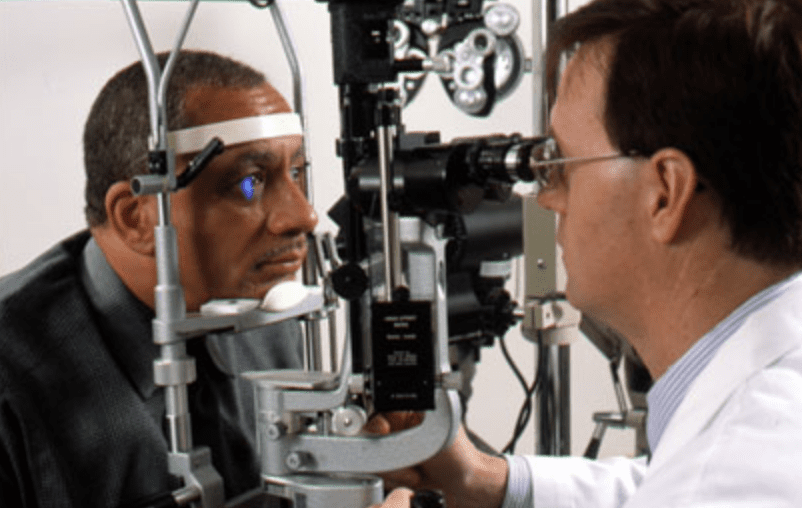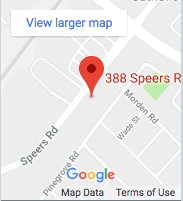
Eye Exam
Many optical stores across Canada offer sight tests, or vision tests, which use automated machinery. It’s important to know that a sight test is not the same as a proper eye exam and is not performed by a trained and licensed professional.
On the other hand, an optometrist can examine, diagnose, treat, manage and help prevent diseases and disorders affecting your eyes, the visual system and related structures. An optometrist can also check your prescription and prescribe eyewear. Depending on the province, a Doctor of Optometry can also prescribe medications to treat certain eye conditions, like infections, inflammations, allergies and injuries.
Here’s how to know the difference between a sight test and an eye exam.
Sight Tests Are Limited
A sight test determines the lens power required by relying on a combination of computerized tests using automated equipment. Automated sight tests are limited, as they aren’t complete and lack accuracy.
Test results can be influenced by eye fixation and alignment, pupil size, corneal or lens irregularities, patient movement and attention and something called instrument myopia. Instrument myopia is caused by the eye’s tendency to over-focus when looking through a machine, which can lead to inaccurate measurement of refraction. As well, eye muscle coordination is unaccounted for.
Additionally, sight tests completely overlook many serious eye or health problems and diseases because the eye itself is not examined. Many serious conditions don’t blur a person’s vision or only do so when the disease has progressed.
Sight tests cannot detect some eye and health conditions, including:
• Glaucoma – If not detected and treated at an early stage, this serious progressive eye disease that is caused by elevated pressure within the eye, can lead to damage to the optic nerve that carries visual information to the brain and, eventually, serious vision loss
• Diabetic retinopathy – This is a weakening or swelling of the tiny blood vessels in the retina of your eye and the growth of new blood vessels resulting in blood leakage and other changes. Blindness can result if diabetic retinopathy is left untreated
• Tumors of the eye
• Retinal detachment – This is a condition where the retina partially or completely comes away from the back of the eye. Once detached, the retina stops working and light signals can’t get back to the brain to be processed. Some degree of vision loss occurs and, depending on the severity, it can be permanent
• High Blood Pressure – This is a condition that can lead to stroke or heart attach and other health problems
• Brain tumors, both cancerous or benign
An Eye Exam Is Like a Physical for Your Eyes
An eye exam is an important part of preventative health care. It’s like a physical for your eyes. When a Doctor of Optometry performs an eye exam, he looks at the entire eye and visual system, as well as your prescription. A comprehensive eye exam can detect eye diseases and disorders like glaucoma, cataracts, retinal detachments and macular degeneration, as well as other health problems such as diabetes, high blood pressure and brain tumors.
A Doctor of Optometry will use automated computerized instruments to provide an estimate of the prescription prior to providing a more detailed refraction, but she also uses her extensive training and experience, together with her professional judgment to direct the testing and interpret the results. This is the only way that an accurate prescription can be determined and customized to a patient’s visual needs.
A comprehensive eye exam includes:
• A case history, including past and present vision and medical issues and a detailed family history
• An analysis of the patient’s visual needs at home, work, school and play. Sometimes, there will be questions about the patient’s school/work environment and recreational activities
• Measurement of the visual acuity of each eye, both with and without corrective lenses, individually and together
• A binocular vision assessment (ability to see using both eyes together), as it relates to eye coordination, depth perception and eye movements. In some cases, this is done to test hand-eye coordination
• A colour vision evaluation, if needed
• An assessment of eye health both inside and outside using a biomicroscope, ophthalmoscope and a dilated eye exam, when indicated. This assessment could uncover anything from a minor deficiency of tears to a major retinal problem or a serious condition elsewhere in the body
• A neurological assessment of the visual system that includes a review of the pupil reactions, ocular muscle reflexes and functions and an assessment of peripheral vision
• Screening for glaucoma, including looking inside the eye at the retina and optic nerve and testing pressure inside the eye
• Diagnosis of the focusing power of the eye based on a combination of measurements and patient responses to questions
All of these test results are used to determine the appropriate prescription lenses to treat refractive and visual problems, develop a program of eye training exercises or recommend medical or surgical treatment. Based on the history of eye health and the results of the examination, recommendations for future eye care can be made.
The final analysis of test results includes your optometrist’s professional knowledge, experience and judgment, something no machine can match.

